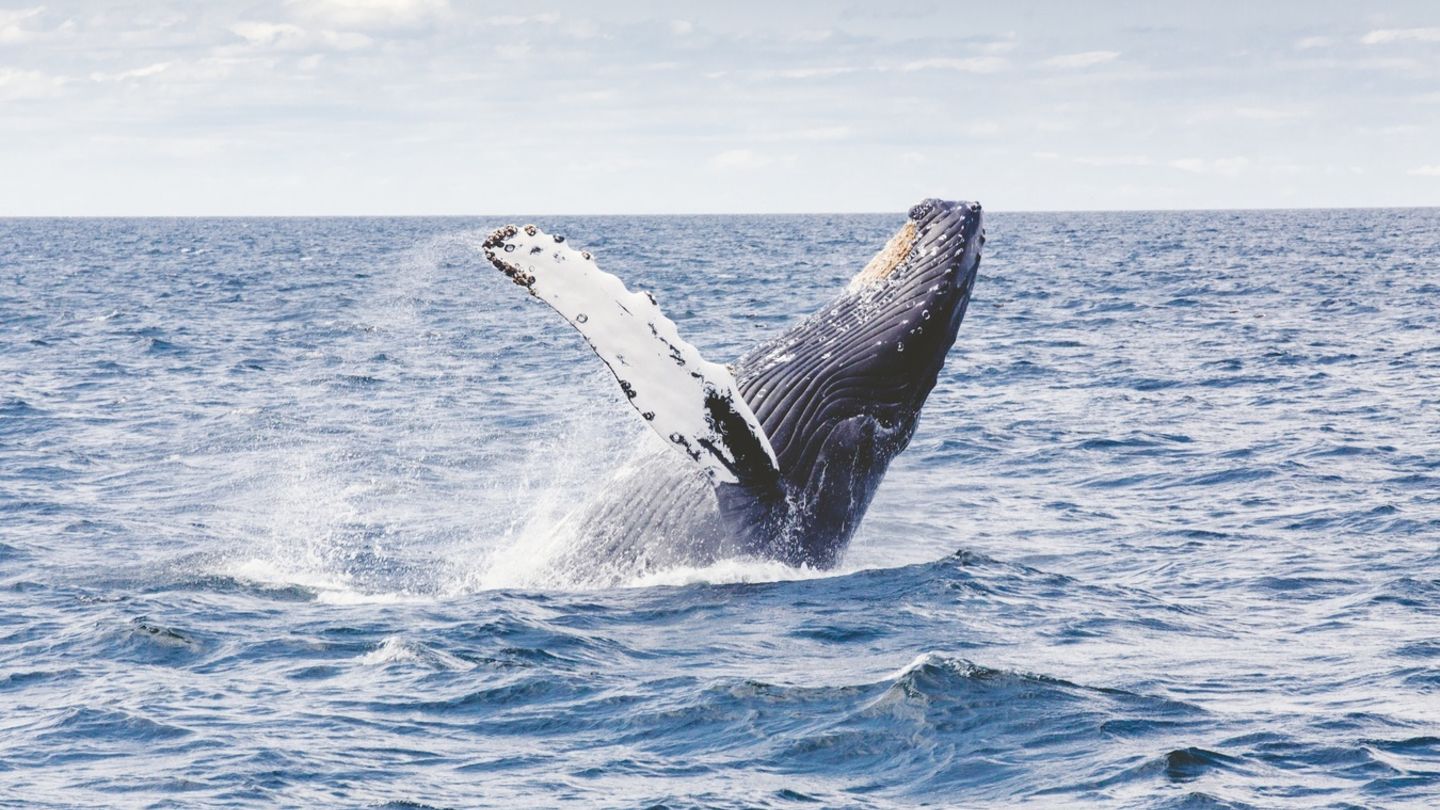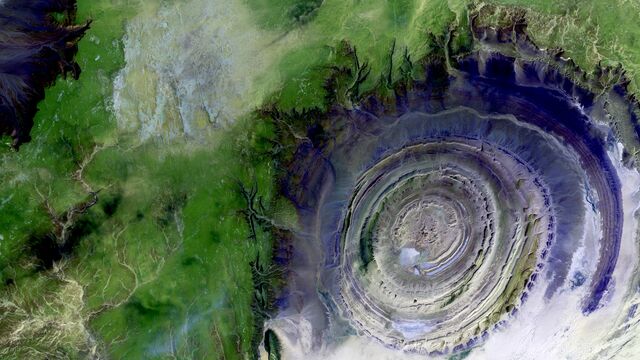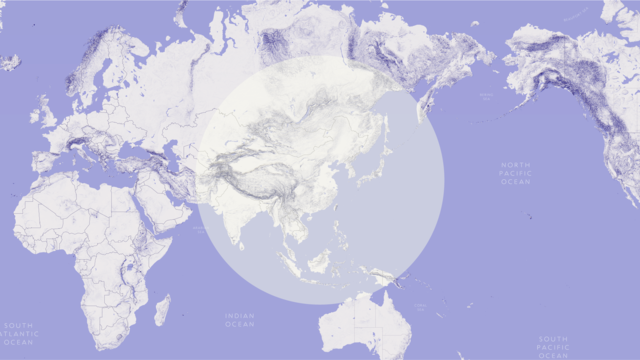Free Willy! Japan Resumes Commercial Whale Hunting

brief
Researcher of the Institute of International Relations Veronika Bílková is considering the problematic side of renewal of commercial whale hunting.
In late 2018, Japan announced that it would withdraw from the International Convention on the Regulation of Whaling and leave the International Whaling Commission. It did so due to its disapproval of the ban on commercial whaling, which has been in force for the Parties of the Convention since 1986, and to its decision to resume whalle hunt since the summer of 2019. This reflection first gives an overview of the evolution and the structure of the international legal regime related to whaling and of the history of Japan’s relationship with this regime. It then shows that the Japan’s attempt to justify the resumption of commercial whaling by the principle of sustainable use of living marine resources cannot be successful for both practical and normative reasons.
INTRODUCION
In December 2018, Japan issued a statement declaring that it had decided to withdraw from the 1946 International Convention on the Regulation of Whaling (ICRW) and to leave the organ established by the Convebtion, the International Whaling Commission (IWC). By pulling out of the regime, Japan will no longer be bound by the moratorium on commercial whaling, adopted by the IWC in 1982, with the effect from 1 January 1986. Japan has never fully respected the moratorium but so far, it has been forced to mask its violations under the so-called hunting for scientific purposes. Starting from the summer 2019, it will be able to resume whaling without this disguise. It will thus join Norway, which has rejected the moratorium since its introduction in the 1980s, and Iceland, which has restored whaling in 2007. Japan has indicated its readines to proceed with whaling in a responsible way and while respecting the principle of sustainable use of living marine resources. The questions however is whether doing so is at this moment still possible – for both practical and normative reasons
LEGAL REGIME FOR THE PROTECTION OF WHALES
It is certainly well known to most readers that whales do not belong among fish. They are mammals, more exactly cetaceans, together with dolphins and porpoises.1 Whales live in all the oceans, and their size, body shape and livelihood differ considerably. Among them is the largest animal of this planet, the blue whale. Whales are intelligent social animals which can communicate, collaborate or learn. They usually live in family groups where they look after each other. They resemble humans in many ways and that is why people have never ceased to be fascinated by them. This, however, has not prevented them from hunting whales, due to which some of their species have been brought to the edge of extermination. Whales are hunted mainly for their meat, bones and blubber, which are used in the production of perfumes, light oils or corsets.
Whale hunting has a long tradition.2 It can be traced back to around 2200 BC, when people from the polar regions began hunting whales using harpoons. Over time, the tools have gradually improved. Already in the Middle Ages, whale hunting resulted in the extermination of the whale population in the Bay of Biscay. Since then, the situation, taken from the point of view of whales, has continually deteriorated. Technological progress has made it possible to intensify the whale hunt considerably and to extend it to areas in which people had not been able to chase cetaceans up to then, especially in the cold waters around the North Pole and the Antarctic. At the turn of the 19th and 20th century, whale hunting took a mass character only. It is estimated that only during the first two decades of the 20th century more whales were killed than in the previous four centuries together. The stock of some whale species was reduced to 10–20% of the original number. Although World War I temporarily limited whale hunting, it was followed by the “dark” period in the 1920s and 1930s, when the whale population was so annihilated that the question of their complete extermination arose for the first time.4 Both states and whaling companies realized that the situation required a swift solution, and that at the international level. In 1931, the first international convention introducing quotas for whaling (Geneva Convention for the Regulation of Whaling) was adopted. It was followed by other multilateral and bilateral instruments in the subsequent years.
The foundations of the current international law regime for the protection of whales were however laid down only after World War II.5 This happened, more exactly, in 1946, when the International Convention for the Regulation of Whaling (ICRW) was adopted. The Convention has been in force since 1948 and it currently has 89 State Parties. Since 2005, the Czech Republic has been one of them. The Convention pursues two fundamental objectives, which are, on the one hand, the protection of whales and, on the other, the safeguarding of the interests of the whaling industry. These goals, originally considered fully compatible, have started to diverge over time, which is, as we will see, one of the main reasons for Japan’s withdrawal from the ICRW. The Convention does not contain a ban on whaling, but it foresees that binding quotas will be introduced for each species. This task falls on the International Whaling Commission (IWC), which is composed of the representatives of all State Parties to the ICRW. IWC adopts the so-called Schedule, which sets the maximum number of whales of each species that may be hunted in various geographical areas.
In the first decades after the adoption of the ICRW, the IWC was dominated by whaling states. Over time, however, with the accession of new members, States with a more critical stance to whaling have gained in power. This group has definitely got a majority at the turn of the 1970s and 1980s, when, moreover,
the international community began to focus on questions concerning the protection of the enviroment. At the Stockholm Conference in 1972, a request for the introduction of a moratorium on whaling was formulated for the first time. It however took another decade, before the moratorium was adopted, in 1982 (with effect from January 1, 1986), by the IWC. The moratorium is not absolute, it only applies to commercial whaling and leaves open the possibility of hunting for scientific purposes and of hunting for the needs of indigenous population (Siberia, Alaska and Greenland). The limits for indigenous hunting are determined by the IWC itself; in the area of hunting for scientific purposes, on the contrary, the decision is left to individual states (so-called special permits). Informations on the number of whales killed for scientific purposes and the results of the research shall be submitted to the IWC, which however has only a limited possibility to limit or control States in this respect.
The moratorium is binding on all State parties to the ICRW except for those who have objected to it. In 1982, four countries – Japan, Norway, Peru and the Soviet Union – objected to the moratirium. Peru and Japan, however, later withdrew the objection and the Soviet Union ended commercial whaling in 1986. That has left Norway as the only state not bound by the moratorium. In 2002, when reacceding to the ICRW, Iceland adopted a reservation to the moratorium, trying to join Norway. This reservation, however, was declared invalid by the IWC, and some State Parties (such as Italy, Mexico or New Zealand) consider that Iceland, due to this reservation, has not become a party to the ICRW.6 Norway, since 1982, hunts about 500 whales a year. Iceland, since 2007, hunts about 50 whales a year. The two states hunt mostly in their exclusive economic zone (ie. in the sea to the distance of 200 nautical miles from the coast) and focus on less endangered species of whales, especially common minke whale. Although these numbers can look quite harmless, the fact is that a large number of whale species is on the list of endangered (or even critically endangered) or vulnerable species. This is true for the ocean giant, the blue whale, whose number is estimated at 5,000–15,000. Sources report that during the 20th century, people killed nearly three millions of whales. Almost 35 years after the introduction of the moratorium, most species have not yet been able to fully recover. Let’s now turn to the Japan’s position on whale hunting.
JAPAN AND WHALING
Japan belongs among traditional whaling powers. Although the history of whaling in this country probably does not go 10,000 years ago back, as is sometimes claimed to prove the length of the national traditions, the Japanese have in the recent decades actively engaged in whaling, both in their seas, and later on also in the area of South Pacific. Whale meat forms part of the Japanese diet, whale oil is used for instance for the production of soaps, whale bones find use in traditional Japanese theater for production of puppets, etc. Whales are also seen as damage-causing animals because they allegedly consume to much fish that would be otherwise hunted by people. Japan has for a long time held a pro-whaling stance. This stance has been, since Japan’s accession to the ICRW in 1951, reflected in the activities of Japanese representatives in the IWC. Japan emphasizes that the IWC is not tasked to protect whales, but should also allow the development of the whaling industry. In the first decades of its existence, it did so, but a decisive break according to Japan came with the adoption of the moratorium on commercial whaling in 1982.
Japan has been critical of the moratorium from the beginning. It voted against it and was one of the four countries to issue an objection. Under the pressure from the United States, which threatened to impose sanctions on Japan under the 1967 Pelly Amendment (ban on imports of fish products to the USA, ban on fishing in US waters), Japan withdrew the objection in 1984. Commercial hunting officially ended in Japan in 1987. Since the same year, however, the country has engaged in the so-called hunting for scientific purposes on a rather large scale (hundreds of whales per year). This hunt is carried out both in its own exclusive economic zone and in the waters of the Northwest Pacific Ocean and in the seas around the Antarctic. The most intensive hunting (for example, in the year 2016 it was 335 whales) takes place in the Antarctic waters. Japanese hunting for scientific purposes is generally regarded as a cover for commercial hunting. This was confirmed, for the program of whaling around the Antarctic (JARPA II – Japanese Whale Research Program under Special Permit in the Antarctic), by the International Court of Justice (ICJ) in the case brought to it by Australia. The ICJ also urged Japan to dis continue the issuance of special whale hunt permits within JARPA II. In response to the decision, Japan ended the program, but it soon replaced it with a new one, in the framework of which whale hunting in the Antarctic waters continues.
Japan also strives to make the IWC change its position. For that purpose, it has made various proposals over the years, aiming for the abolition of the moratorium and the adoption of condition for sustainable commercial hunting. Japan’s position can be summarized in three main points: 1. Stocks of certain whale species such as Minke whale are scientifically proven to be not endangered; 2. The limited, sustainable use of such whale species does not pose any overall risk to stocks; 3. The Japanese Government is strongly opposed to uncontrolled commercial whaling. The latest proposal to restore commercial whaling was submitted by Japan in July 2018. The proposal was discussed at the IWC meeting in Florianopolis, Brazil, in September 2018, in rejected by 41 : 27 votes. The meeting, on the contrary, adopted, on the initiative of Brazil, the so-called Florianopolis Declaration, which declares that commercial whaling is no longer a necessary economic activity. The declaration is a signal that anti-whaling states nowadays have a majority in the IWC. In response to the rejection of its proposal and the adoption of the Florianopolitan Declaration, Japan decided to withdraw from the ICRW and to leave the IWC.
In the official statement of withdrawal dated 26 December 2018, we encounter the familiar motives. Japan recalls that the IWC has been entrusted with a dual mandate, under the ICRW, and strive, on the one hand, for “the proper conservation of whale stocks”, and on the other hand, for “the orderly development
of the whaling industry” (paragraph 7 of the ICRW Preamble). The moratorium on commercial whaling prevents the implementation of this dual mandate and turns the IWC into a body that does not take into account the interests of pro-whaling states. The IWC meeting in 2018, according to Japan, showed that “it is not possible in the IWC […] to seek the coexistence of States with different views” (paragraph 4). Japan will thus continue to participate in the deliberations of this body only as an observer without being bound by its decisions. By withdrawing from the ICRW, it will cease to be bound by the moratorium on commercial whaling. The resumption of whaling is foreseen for June 30, 2019, when the ICRW will cease to apply to Japan. According to the statement, commercial hunting should only take place in Japan’s exclusive economic zone (i.e. within 200 nautical miles from its coast). At the same time, Japan should stop whaling in the Antarctic waters. It also promises that whaling will “be conducted in accordance with international law and within the catch limits calculated in accordance with the method adopted by the IWC to avoid negative impact on cetacean resources” (paragraph 7). The key principle to be followed is that of the sustainable use of living marine resources.
CONSERVATION OR PROTECTION?
Japan‘s withdrawal from the ICRW has given rise to international criticism, especially from anti-whaling countries (Australia, New Zealand, the UK) and international non-governmental organizations (NGO). For instance the Humane Society International, an NGO dedicated to animal protection, stated on its website that “by leaving the IWC but continuing to kill whales in the North Pacific, Japan now becomes a pirate whaling nation killing these ocean leviathans completely outside the bounds of international law”. Although this statement is exaggerated (whale hunting does not meet the definition of piracy, nor is it undisputedly unlawful), it shows how controversial the Japanese step is. That may be somewhat surprising. After all, Japan does not deny that whales need to be protected. It simply argues that responsible whaling does not conflict with this protection. Its proposal would be to abolish the moratorium and introduce clear, and internationally enforceable, quotas for commercial hunting. If (or until) the abolition is not realistic due to the opposition of anti-whaling states, Japan will have to act unilaterally, albeit within the confines of international law. Although this attitude may not seem extreme or dangerous, the question arises, whether, in case of whales, it is still possible to apply the the principle of the sustainable use of living marine resources – for both practical and normative reasons.
The practical reasons relate, first of all, to the possibility of ensuring that hunting does not lead to a further reduction in the stock of some whale species or that it does not prevent the increase in this stock for species that are (critically) endangered. In this context, it is worth recalling that commercial whaling in the period from the late 19th century to the 1980s was so intensive that it resulted ina a sharp decline in the number of whales. For instance, the stock of the blue whale decreased from about 300,000 whales in 1875 to about 5,000–15,000 whales at present. This situation is already better than before the adoption of the moratorium, when blue whale was threatened with extermination (it is estimated that there were about 650–2,000 blue whales at that time in the whole world). It is however evident from the numbers that the situation is changing very slowly. Three decades after the adoption of the moratorium, the blue whale remains among endangered species. For some other whale species, the situation is better. Yet, their stocks are also much lower than before the start of the mass whale hunting at the turn of the 19th and 20th centuries – even though these species are also subject to the moratorium. The abolition of the moratorium, or withdrawal from it through a reservation to, or withdrawal from, the ICRW, especially if carried out by more than one country, could make the situation worse again. Furthermore, hunting is not the only risk that whales face today. They are also threatened by climate change, sea pollution, collisions with large vessels, or strong sonars, mainly used on military ships, whose activities make it difficult for whales to find orientation.
Another argument against the resumption of commercial whaling is the fact that the international control in this area does not work in an ideal way. Although the IWC is tasked to monitor all hunting, and state parties to the ICRW have to provide it with the relevant data in thiw respect, this system, as is well illustrated by the Japanese hunting programs for scientific purposes, has significant gaps. After its withdrawal from the ICRW, Japan will no longer have the duty to report to the IWC and it will therefore depnd on its good will whether it continues to cooperate with this body. While the country has declared its interest to stay in contactwith the IWC, it might also succumb to the temptation to make use of the situation in which virtually all other countries are prevented from commercial whaling by the moratorium. There is also the risk that Japan’s withdrawal from the ICRW will encourage other pro-whaling states (for instance the Russian Federation or Antigua and Barbuda) to resume commercial whaling and/or to leave the ICRW system. Yet another factor speaking against the resumption of commercial whaling is that whales do not have completely unique properties and can therefore be replaced by products from another “material”. Moreover, in recent years, it seems that whale watching has become more lucrative than whale catching.
In addition to these practical reasons, there are normative reasons against whale hunting as well. These reasons can even be considered crucial in the debate today. As shown by scholars, the legal regime for the protection of whales has knows a significant shift since its creation in the mid-20th century, resulting from the clash of two cultures – conservationism and protectionism.8 The two cultures both seek to ensure the preservation of whales, but they do so on account of different factors. For conservationism, human interests are crucial and the protection of whales is important only because (and to the extent that) people benefit from whales. In the past, the benefit was defined in strictly material terms, and the value of whales was thus calculated on the basis of their economic use (meat to eat, etc.). Later, non-material factors, such as pleasure of whale watching or the possibility to learn more about whales, have been subsumed under benefits. The basic logic, that whales are here for us, people, remains however the same. Protectionism, on the other hand, seeks to protect whales as such. It is based on the belief that whales are intelligent, thoughtful and sentient beings, which can not be killed for the benefit of another, i.e., human species. Whales have a value in themselves that humans have no right to destroy.
At the time of the adoption of the ICRW, conservationism dominated at the international scene – whales were to be protected, but commercial whaling was expected to continue. Over the next decades, the situation gradually changed. Protectionism began to prevail in the 1980s, as it was reflected in the adoption of the moratorium. Since then, this trend has further strengthened – whales or cetaceans in general, due to their intelligence and similarity to humans, have begun to be excluded from the category of animals and placed either between animals and humans or, even, at the level of humans. This trend can be demonstrated by the Declaration of Rights for Cetaceans: Whales and Dolphins, which was adopted in Helsinki in 2011 by a group of experts from various areas of science (zoology, ethics, law, etc.). The Declaration grants whales and dolphins certain fundamental rights, including the right to life, freedom of movement or the right to the protection of their natural environment. It also forbids keeping these cetaceans in captivity and turning them into property, and calls on states to adopt appropriate legal framework at the national and international level. Some states have responded to this call. This is for instance the case of India, which declared intelligent cetaceans, i.e. whales and dolphins, „non-human persons“ in 2013 and prohibited to keep them in captivity and use them for entertainment (e.g. in aquaparks).
CONCLUSIONS: WHALES AS HOLDERS OF NON-HUMAN RIGHTS?
The 2011 Declaration and the Indian regulation show that whales and dolphins, together with great apes (chimpanzees, gorillas, orangutans), gradually cease to be regarded as mere objects of protection and start to be treated as bearers of certain so-called non-human rights. This responds to the objection, often made by Japan and other pro-whaling states, that there is no reason to treat whales differently than other animal. More and more people (and states), rightly or wrongly, consider that such a reason exists. It has to do with the fact that of all animals, cetaceans and great apes are, with their way of thinking, perceptions and actions, the most similar to humans and they herefore deserve similar protection as humans. This view also discards another objection often made by Japan, that based on the natinal cultural tradition of commercial whaling. Leaving aside that the very existence of this tradition is controversial (largescale whaling only began in Japan in the Meiji period at the turn of the 19th and 20th centuries), it should be remembered that traditions alone cannot justify acts which are contrary to the fundamental values of international community. The protection of whales and some other animal species is with increasing frequency ranked among these values. This also explains the analogy of whaling and cannibalism that is sometimes made. Although the international legal regime for protection of whales, based on ICRW, does not fully embody this view (leaving for instance space for indigenous hunting), it is clearly evolving along its lines. Japan’s decision to resume commercial whaling goes against the course of this evolution, it therefore cannot be expected that it would meet with understanding at the international scene.







